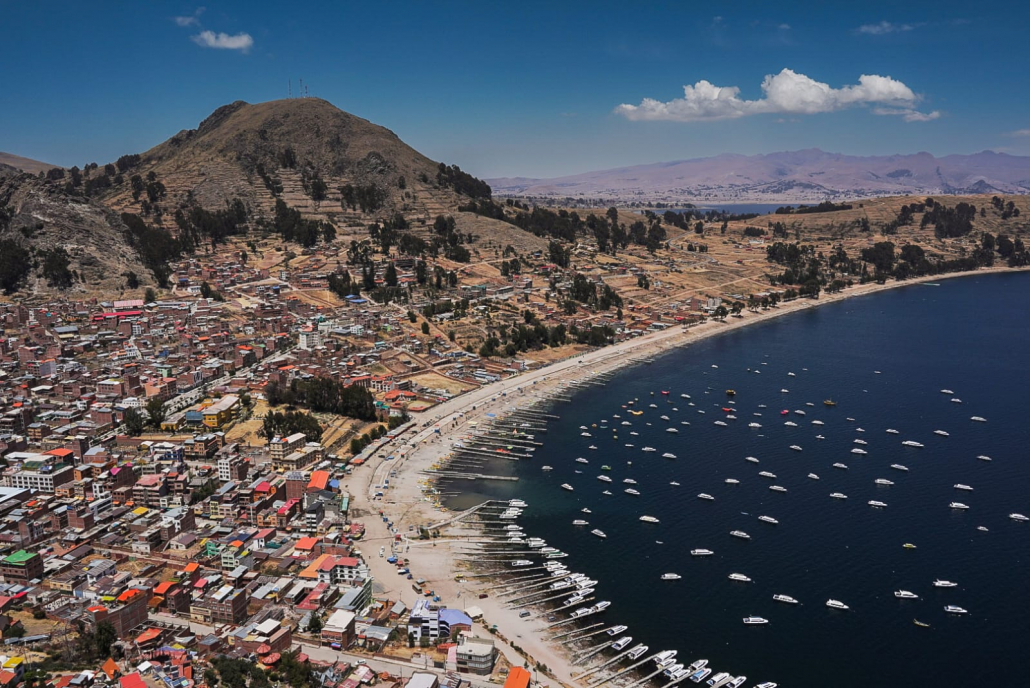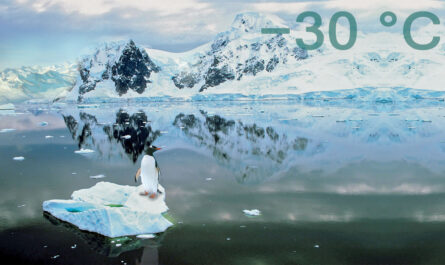Why the World’s Highest Lake Is in Deep Trouble: Lake Titicaca — perched at an altitude of 3,812 m (12,507 ft) above sea level — is one of the most iconic natural and cultural landmarks in the Andes, shared between Peru and Bolivia. But beneath its shimmering blue surface lies a worsening crisis. From shrinking water levels to pollution and biodiversity loss, this ancient lake is now facing one of its most dangerous chapters in history.
Shrinking Waters and Escalating Drought
Once a vast and vital Andean water body, Lake Titicaca is now visibly shrinking. Studies from 2024 indicate it is losing around 120 million metric tons of water per year, mainly due to reduced rainfall, glacial melt, and high-altitude evaporation.
Between August 2022 and March 2023, precipitation was 49% below average, setting the stage for one of the lowest water levels in decades.
At such high altitudes, intense solar radiation, strong winds, and climate-induced warming are speeding up evaporation, which accounts for 90% of water loss. Areas like Cojata Island now reveal dry, cracked soil where wetlands once flourished, and boats lie abandoned far from the retreating shoreline.
Pollution Overload: Sewage, Mining, and Algae Blooms
Lake Titicaca is being overwhelmed by urban sewage, mining waste, and plastic pollution.
In Puno, Peru, only 20% of household wastewater is treated. The remaining raw sewage enters the lake, contributing to the growth of toxic algae and oxygen depletion.
In El Alto, Bolivia, a city of over 1 million people, only half the population is connected to a working sewage system. The lone wastewater plant is heavily overburdened, allowing waste and chemicals to spill into tributaries.
Combined with runoff from unregulated mining, rivers such as the Katari, Coata, Ramis, and Suches carry heavy metals like arsenic, mercury, and copper directly into the lake.
Each year, more than 12 million cubic meters of sewage and over 7,000 tons of plastic waste enter the lake. In areas like Cohana Bay, floating plastic waste can be up to 1 meter thick, suffocating aquatic life and degrading water quality.
Biodiversity Under Siege: Extinct Fish, Disappearing Frogs and Birds
Lake Titicaca is home to dozens of endemic species, many of which are now facing extinction.
The massive Titicaca water frog (Telmatobius culeus) has declined by over 80% due to pollution and habitat loss. Once common, it is now critically endangered.
The Titicaca grebe, a flightless bird found nowhere else, has fewer than 750 individuals left and is endangered due to fishing net entanglement and wetland degradation.
Native fish species like Orestias (killifish) have been devastated by invasive species such as trout and silverside, introduced for commercial purposes. These non-native fish outcompete locals and worsen the ecological imbalance.
As biodiversity declines, local communities lose food sources, traditional livelihoods, and cultural identity tied to the lake’s ecosystem.
Indigenous Communities Facing Cultural and Economic Collapse
More than 3 million people live in the Lake Titicaca watershed, including Aymara, Kichwa, and Uro communities. Their culture, economy, and survival are intimately tied to the lake.
In recent years, they have reported:
-
Crop failures from erratic rainfall
-
Fish shortages due to pollution
-
Contaminated drinking water
-
Rising health issues, especially among children
With no centralized waste management, many locals are forced to organize community cleanups and teach youth to respect and protect the lake.
One community leader said, “It is our mission to take care of this ancient legacy.”
Another activist added, “I have made this responsibility my own… and now I must pass it on.”
Binational Action and Promising Innovation
In early 2024, Peru and Bolivia signed a $500 million bilateral agreement to address the lake’s crisis. This includes:
-
$117 million in short-term solutions (wastewater treatment, education)
-
$400 million in long-term restoration efforts (wetland recovery, infrastructure)
Innovative methods are already being tested. These include:
-
Totora reed beds as natural water filters
-
Constructed wetlands
-
UV and ozone-based treatment systems
A similar project on Lake Uru Uru in Bolivia — where Indigenous women built reed mats on plastic floats — resulted in 30% pollution reduction and wildlife return. This model is now being adapted for Lake Titicaca.
Why It Matters — and What’s Next
Lake Titicaca is far more than a geographic marvel. It is a cultural cradle, a source of livelihood, and a spiritual heartland for the Andes.
But if current trends continue, we may lose:
-
Its unique species
-
Its freshwater reserve
-
Its ancestral knowledge
-
And its natural beauty
Key priorities for 2025 and beyond:
-
Expand sanitation infrastructure in urban and rural areas
-
Reinforce environmental law enforcement for industries
-
Scale up nature-based remediation (like reed beds and wetlands)
-
Support Indigenous-led restoration projects
-
Foster international cooperation and education
Lake Titicaca is at a tipping point. Action taken in 2024–2025 will determine whether it survives the century — or becomes a cautionary tale of ecological neglect.
The World in a Bite: How to Explore Cultures Through Street Food | Maya



